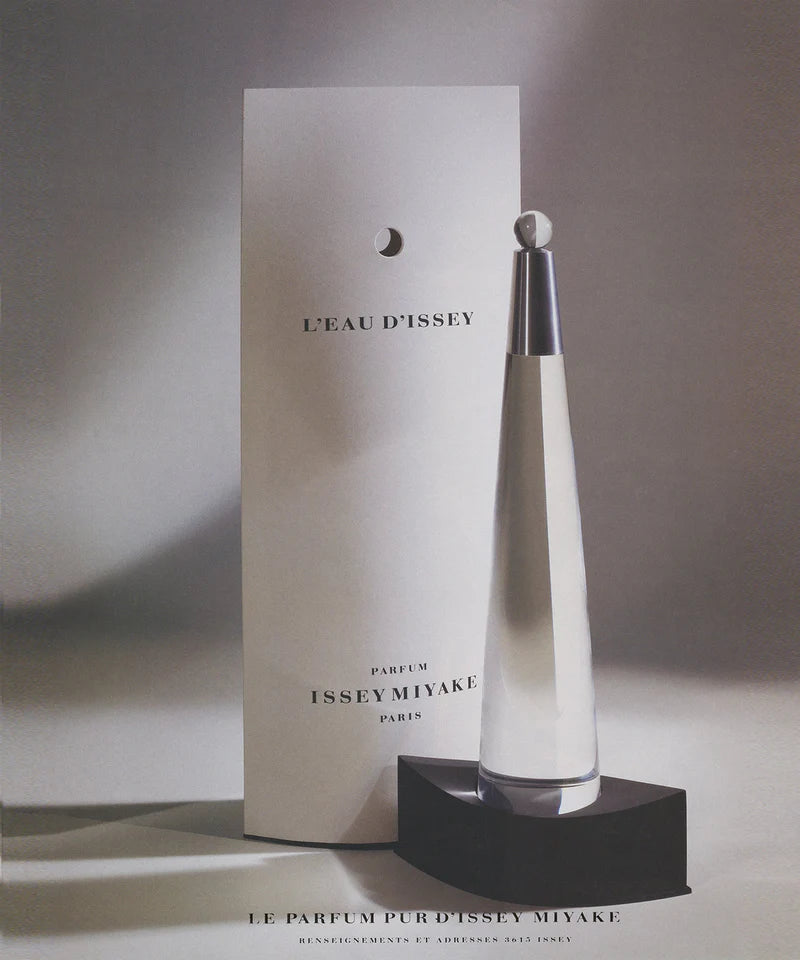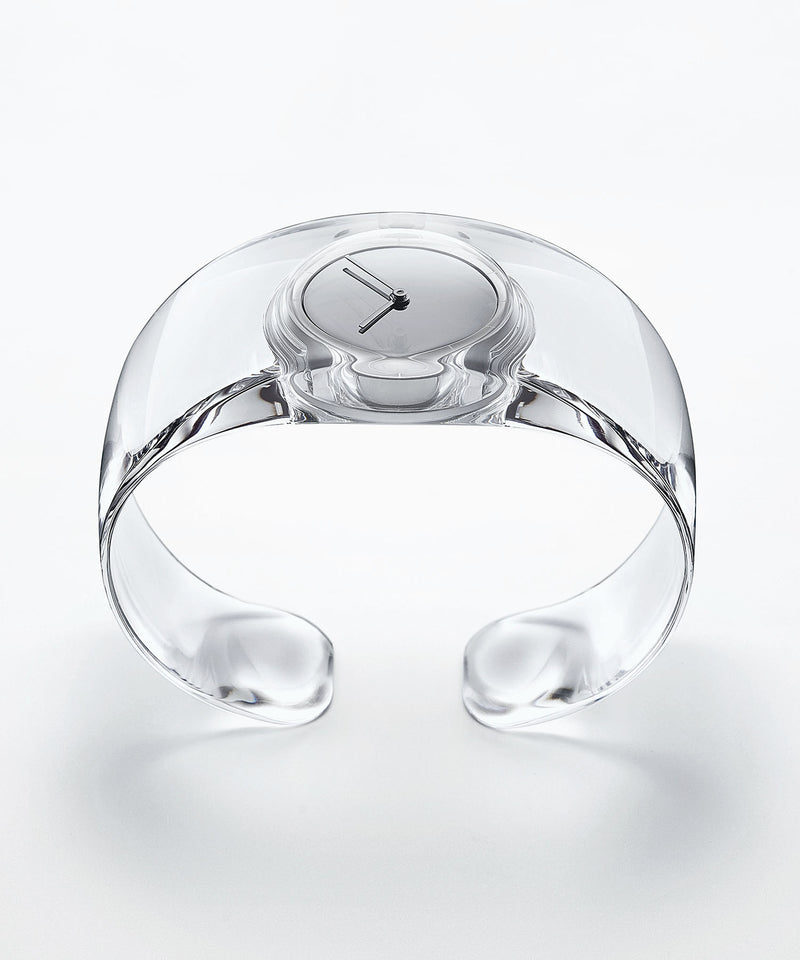27.06.2025 | IM MEN SPRING SUMMER 2026 COLLECTION
On Thursday, 26 June, IM MEN unveiled its Spring Summer 2026 collection, DANCING TEXTURE, at the Fondation Cartier* pour l’art contemporain—a museum located in Paris’s 14th arrondissement and designed by architect, Jean Nouvel.
This collection began with an encounter between the IM MEN design team and the work of Shoji Kamoda, a ceramic artist who strived to achieve a unique formative beauty. The design team pursued the possibilities of wearing his creations as garments. The sensations evoked through repeated quiet conversations with Kamoda’s practice are amplified and expressed in the form of clothing.
Guided by the philosophy of a piece of cloth, the collection finds harmony with the richly layered, multifaceted textures of Kamoda’s works. From this fusion emerged textiles with depth and dimension, woven from diverse threads, intricate structures, created by the subtle hand of innovation. Within the space where bold swaths of fabric unfolded like abstract landscapes, performers moved gently yet deliberately—becoming one with the cloth, as if it too, had drawn breath and awakened to life.
*The museum is currently closed due to an upcoming relocation in Paris.

Shoji Kamoda (1933–1983)
Shoji Kamoda was a pioneering ceramic artist who left a profound mark on contemporary Japanese ceramics. Born in Osaka and trained in Kyoto, he developed his practice in regions such as Mashiko and Tōno. Through a range of innovative techniques, he pushed the boundaries of traditional forms and decorative expression, expanding the very possibilities of ceramic art. Despite a career that spanned only about twenty years, his bold and uninhibited body of work continues to radiate a striking presence, deeply influencing generations of makers to this day.

UROKOMON
The UROKOMON series was inspired by the bold visual impact of the animal-like scale patterns of these ceramic works. In an effort to convey the motifs through the textile, a technique known as “bonding opal process” was adopted.
The process begins with printing part of the pattern onto the base layer. After bonding a layer of cotton fabric on top, the entire pattern is printed again and overlaid on the surface. Then, by using advanced and highly precise printing technology, a special treatment is applied only to designated areas of the top fabric. When the fabric is washed with water during the final step, the untreated areas of the upper layer peel away, revealing a printed base layer beneath. The result is this series shaped by the motif of a ceramic plate where dynamic curves and straight lines merge in harmony.

GINTO FLAT
The Gintō (silver pottery) piece, made with pure silver pigment glaze, is a square bowl with a metallic luster. Its weighty and rich texture is recreated in the form of textile, using silver foil. Based on the concept FLAT, the series that applies a technique of folding three-dimensional objects into flat pieces, we designed garments which, when laid flat, echo the softly rounded square shape of the bowl as seen from above.
Instead of putting the foil onto the fabric, it is directly applied to the surface of the folded GINTO FLAT garment. This intentional choice allows for variation in the density of the foil throughout the garment, capturing the subtle fluctuations in sheen that are visible in the Gintō rectangular bowl. The garments were given a natural silhouette, avoiding overly rigid, linear shapes, as inspired by the piece—with its organic form yet sharp edges.

KAIYU
The series of ceramic work titled “Kaiyu”, glazed primarily with plant ash, feature a striking contrast between their almost white, pale celadon hue and the exposed earthy texture of the clay body. The distinctive colour tones and the circular wheel marks that appear on the interior of the ceramics have been recreated through pigment printing.
The blouson and trousers from the KAIYU series, designed to form a circle when laid flat, were printed directly whilst in their flattened state. The printing process was divided into left and right halves, with three different screens layered on each side to create the deep, intricate tones. To enhance the contrast further, a glossy binder was added to areas reminiscent of the sheen of the glaze, while powder pigments were used on parts representing the raw clay surface to achieve a matte finish.

ENGRAVE
The series of ceramic work titled “Waved Patterns” is characterised by wave-like carvings that are integrated with the form itself. On first glance, the patterns may appear as naturally formed wrinkles, but a closer observation reveals their meticulous and intentional design.
By studying how the patterns would unfold when viewing the plate from above, intricate designs for the ENGRAVE series were created using a jacquard loom and woven with multicoloured threads. By shrinking the heat-sensitive fabric (woven with stretch yarn in the weft), the three-dimensionality of the relief patterns and the sharpness of the edges can be realised. Three styles are available: trousers with suspenders, a coat, and a blouson, each with a different structure. The three-dimensional garment is formed from a flat surface when zipped closed.

EARTH
This series of coloured jars features contrasting matte vermilion and white wave patterns. Rather than drawing white lines, the vermilion was painted in a way that leaves the clay base material exposed. The unpainted surface that retains its organic rough texture refracts light through the intermixing of various clay particles.
To recreate the jar’s colour and texture, this EARTH textile was woven using a combination of multiple yarns. The weft is formed of five different vermilion-coloured threads, including boucle yarns wrapped with metallic threads. For the warp, black and white threads were combined and a special weaving technique was used to make only the reverse side grey. The structure of the garment is also inspired by the white wave patterns, incorporating wave-like cuts into its square-shaped bodice. The body and sleeves feature zip detailing that help form the silhouette.

FISHING NET NYLON
FISHING NET NYLON is made from nylon fabric partially woven from recycled used fishing nets collected in Japan. Soft and supple, wrinkle-resistant, lightweight, and highly durable, the material is distinctive with its delicate texture and vivid green hue. By giving new value to discarded resources, this series embodies an eco-friendly approach to manufacturing. The coat, evolving from the ongoing development of the WIND COAT, features a generous rain shield at the back and a convertible design: unzipping the hood transforms it into a wide, dramatic collar.

RESILIENCE
RESILIENCE is a two-piece outfit series crafted from polyester fabric with a subtle canvas-like texture, finished with a bright colour during the garment dyeing process. Lightweight and wrinkle-resistant, the material offers practicality ideal for daily wear. Design and function come together through the use of strap detailing in key placements, such as pockets and adjustable trouser widths, enhancing both utility and styling options.

ISSEY MIYAKE FOOT HYPER TAPING
MIYAKE DESIGN STUDIO (MDS) and ASICS SportStyle have launched a joint footwear development project titled “ISSEY MIYAKE FOOT”. Rooted in Miyake’s touchstone idea of creating clothing from the most universal of concepts—a piece of cloth—MDS continues to look to the future and to create clothing that is sustainable, beautiful, and suited to the needs of people in a given time. ASICS, guided by a strong belief in supporting the physical and mental development of people through sport, has spent decades cultivating technical expertise and continues to pioneer innovation in footwear. Through the resonance of both creativity and technology, the project sets out to create entirely new footwear.
The first outcome of this collaboration is “HYPER TAPING”. The “ASICS Stripes”, a set of intersecting lines placed on the sides of ASICS shoes, were originally developed to enhance structural strength and fit. Inspired by ASICS’s dedication to incorporating function even into its most iconic visual elements, MDS reinterpreted the stripes through its own approach—shaped by an ongoing exploration of the relationship between body and clothing—reconstructing them to wrap the foot like athletic taping. This new footwear is the product of creativity and technology from both MDS and ASICS.
Please click the link below to view all looks of this collection.
A special exhibition will be held in Paris from 28 June to 1 July. This exhibition has been planned and organised as an opportunity to connect with a wider audience through our SPRING SUMMER 2026 COLLECTION titled “DANCING TEXTURE”.
|
Period: |
28−30 June, 10:00AM−6:00PM (Paris time) |
|
1 July, 10:00AM−4:00PM (Paris time) |
|
|
Venue: |
Atelier Vendome 38 rue du Mont Thabor, 75001 Paris |
|
|
free admission |
|
Reservations: |
SCHEDULE YOUR VISIT |
|
*Link to external site |
















